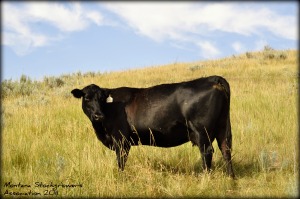Drought Reshaping Cattle Feeding and Inventories
 Extensive and prolonged drought throughout much of the country is spurring a change in the feeding and inventory map for U.S. cattle herds. For the first time, Nebraska surpassed Texas in the number of cattle on feed and the trend continues as the finishing sector of the business continues moving closer to the feed source. Harvest Public media has a great story on the subject and insight to what has spurred the change. (Click here to listen to the story)
Extensive and prolonged drought throughout much of the country is spurring a change in the feeding and inventory map for U.S. cattle herds. For the first time, Nebraska surpassed Texas in the number of cattle on feed and the trend continues as the finishing sector of the business continues moving closer to the feed source. Harvest Public media has a great story on the subject and insight to what has spurred the change. (Click here to listen to the story)
Here’s an excerpt from the story, Drought Re-shaping the Cattle Map, that describes more about cattle following the feed.
Many of those cattle have moved to Midwestern feedlots. This year, for the first time, Nebraska passed Texas as the top cattle-feeding state in the country. That is, Nebraska houses the most cattle in feedlots, which are generally the final step before they head to the slaughterhouse.
The main reason is a difference in feed prices. Feed costs are up in Texas, stoked by drought. But they’re relatively low in the Midwest, thanks to a byproduct of the region’s large ethanol industry — distillers’ grains.
Distillers’ grains are the leftovers of corn ethanol production. Nebraska is second in the country in ethanol production, behind Iowa. When the starch is removed from the corn kernel to be fermented into fuel, the protein-rich fiber is left behind. But it can be used as an inexpensive ingredient in livestock feed.
Terry Van Housen takes a handful of feed from the bunk at his feedlot. Lower feed costs give Nebraska an advantage in the cattle-feeding industry. (Photo by Grant Gerlock)
Cattle feeder Terry Van Housen calls Nebraska the “garden spot for raising cattle.” At his feedlot near the small town of Stromsburg, 8,000 animals line up along two miles of concrete bunks to pile on the pounds. He has replaced 30 percent of his regular feed ration with distillers’ grains, the corn ethanol byproduct.Van Housen gets the moist, yellow, sweet-smelling stuff fresh from an ethanol plant just 18 miles away. He says the cheap source of feed gives Midwestern feeders an edge over southern competitors.
“So that’s a big deal,” Van Housen says. “A lot of this stuff, if you fed in Texas, it would have to come from here.” And as Van Housen says, it’s cheaper to haul the cattle to the feed than haul the feed to the cattle.
How have drought and changing market conditions from across the country affected your cattle operation? Has your marketing plan changed in response to these adjustments?
Let us know what you think! Join in the comments section below, chime in on Facebook and Twitter, or send us your perspective via email to [email protected].

